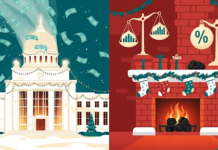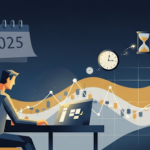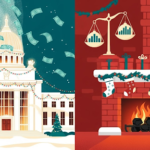Hurricane season is upon us, and experts are predicting a very busy season. NOAA predicts a 70% chance of 14-21 named storms, with 2-5 of them being major hurricanes. As this article is being written, category 3 Hurricane Idalia is barreling into Florida’s Gulf Coast, disrupting millions of lives throughout the state and coastal Georgia.
Hurricane seasons can have various effects on the financial markets, although the extent of these impacts can vary based on factors such as the severity of the storms, the geographic location of the markets, and the overall global economic conditions. Here are some ways in which hurricane seasons can affect the markets:
1. Energy Markets: Hurricanes can disrupt oil and gas production in the Gulf of Mexico, which is a significant hub for energy production in the United States. If production facilities are damaged or shut down due to hurricanes, it can lead to a reduction in oil and gas supply, potentially causing an increase in prices. Energy companies’ stocks can also be affected by such disruptions
Example: Exxon Mobil (XOM) shares have risen from $100 to $110 during the week preceding Hurricane Idalia.
2. Insurance and Reinsurance Companies: Hurricane-related damage can lead to a surge in insurance claims, affecting the profitability of insurance and reinsurance companies. If a hurricane season is particularly active and damaging, it can result in substantial payouts, impacting the financial performance of these companies. As a result, their stock prices might experience fluctuations.
Example: The Allstate Corporation (ALL) Shares of ALL have fallen from $140 in January to less than $107 in the week prior to Hurricane Idalia.
3. Construction and Building Materials: Hurricane damage often requires significant reconstruction and repairs, which can drive demand for construction materials and services. Companies in the construction and building materials sector might experience increased business during the post-hurricane recovery period.
Example: Home Depot (HD) shares have risen from $321 to $329 in the days prior to Hurricane Idalia.
4. Retail and Consumer Spending: In regions affected by hurricanes, consumer spending patterns can change. In the short term, there might be increased demand for necessities like bottled water, non-perishable foods, and emergency supplies. However, discretionary spending could decrease as people focus on recovery and rebuilding efforts.
Example: Carnival Cruise Lines (CCL), a leading discretionary spending stock is trading flat between $15 and $16.40 in the weeks prior to Hurricane Idalia.
5. Transportation and Logistics: Hurricanes can disrupt transportation networks, leading to delays and supply chain interruptions. Ports, airports, and highways can be closed, affecting the movement of goods. This disruption can impact companies involved in transportation, logistics, and supply chain management.
Example: Norfolk Southern Corporation (NSC) Shares fell from $238 down to $238 since July, and shares are trading flat over the past two weeks, between $207-$212 range.
6. Agriculture: If hurricane-related flooding occurs in agricultural areas, it can damage crops and reduce yields. This can impact the prices of agricultural commodities and influence related industries, such as food processing and distribution.
Example: Archer-Daniels Midland (ADM) Shares fell from $87 to $80 in August. Shares are showing signs of rebounding.
7. Tourism and Hospitality: Areas that rely on tourism may see a decline in visitors during hurricane seasons due to concerns about travel safety. Hotel and travel-related stocks can be influenced by reduced tourism activity.
Example: The Walt Disney Company (DIS) Shares have fallen from $92 to $82 in the weeks prior to the hurricane.
8. Market Sentiment: The uncertainty associated with hurricane events can contribute to overall market volatility. Traders and investors might react to news about hurricanes and their potential impacts on various industries, leading to fluctuations in stock prices and broader market indices.
9. Government Response and Policies: Government actions, such as disaster declarations, relief funding, and regulatory decisions, can affect the market. For instance, increased government spending on disaster recovery can stimulate certain sectors of the economy.
It’s important to note that while hurricanes can have short-term impacts on specific industries and markets, the broader and longer-term effects can be more challenging to predict and can be influenced by various factors, including the scale of the damage, government policies, and the overall economic environment.

























